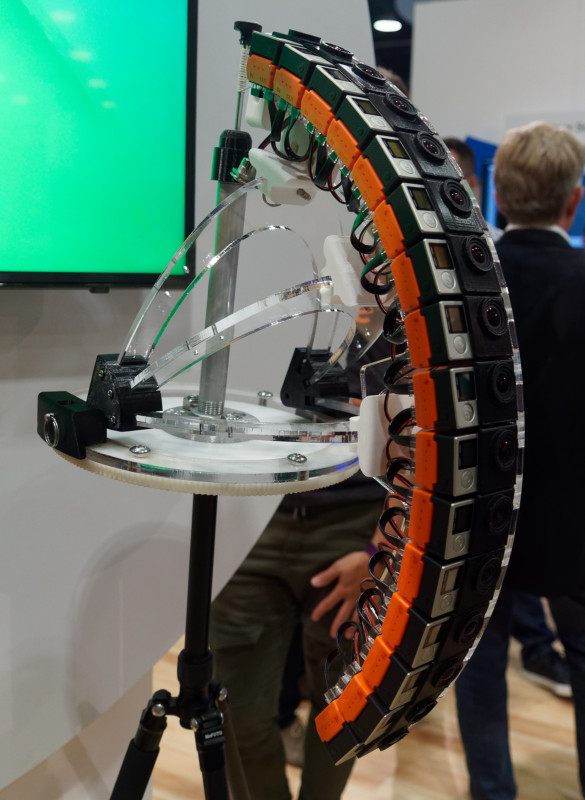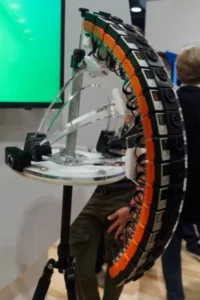Display Summit 2018 was held on Oct. 2-4 at two facilities: Harman International in Northridge, California and at the Pacific Winnetka theaters in Chatsworth, California. A 2-day symposium on the light field ecosystem and the HDR cinema ecosystem was held at the Harman facility. On Oct. 4th, a half-day session at Winnetka was devoted to sound and visual demonstrations of the first commercial LED cinema screen (the Onyx screen from Samsung).
The Light Field track proved to be very wide ranging with a ‘who’s who’ of experts in this emerging field. We learned about LF capture efforts and got to check out one of the new light field capture rigs that Google has used to capture, render and display LF data in a VR headset. It was quite impressive.
 This is one of Google’s light field cameras that was also shown at Siggraph. Image:Meko
This is one of Google’s light field cameras that was also shown at Siggraph. Image:Meko
We also heard a lot about standardization efforts to try to develop a container for the distribution of light field data, which is very bandwidth intensive. There is a clear division in opinions as to how to represent next generation images. Once camp sees the evolutionary path of better encoding of the traditional video signal paradigm. The other is more analogous to a gaming pipeline where everything is a 3D model with various levels of fidelity and realism. This debate will continue for some time.
In LF display, we were able to see an impressive plenoptic demo from FoVI3D and a volumetric demo from LightSpace Technologies. The challenges on the display side are equally immense with the sheer number of pixels needed for high fidelity at a staggering number and that means much more intensive GPU processing. However, several companies are working on these issues and we saw some progress on a number of fronts.
In the HDR cinema session, there was a lot of discussion about the specifications for new LED cinema screens. Samsung is leading with its first commercial deployment, but others will follow within six months. DCI is working on a draft spec that includes security, but a lot of the numbers remain open for discussion. Their guidance spec talks about not “seeing” a lot of problems, but is short on quantifying how to measure and set limits of acceptability. Lots of work is needed here.
MTT Innovation also talked about their light steering projection system which will offer a very compelling HDR cinema image at price points that will be well under those of the LED solutions. They plan to install a system in a Los Angeles post house very shortly, so content creators can start to understand the system and how to grade content for this screen solution.
There was also a good deal of discussion about how to create content (HDR or SDR grade first?) and how to distribute it (hybrid DCP, single master solutions). As more HDR cinema screen solutions come to market – not necessarily all compatible, more versions will be required. Who will pay for that? Will standardization effort solve this? There were more questions than answers.
Audio with a solid screen is also an issue and we heard about the Harman solution and listened to it at Winnetka. They have made great progress and are like to be convincing content creators it is now acceptable – at least in this theater. Other installationss will likely need considerable engineering as well.
We also discussed multi-primary systems, LED metrology and management systems for extremely large pixel systems.
The Winnetka sessions were a highlight for many with some of the best images I and many others have ever seen on a big screen. – CC

